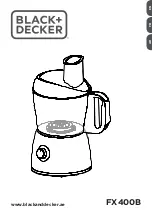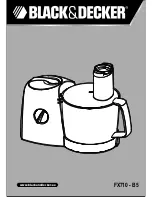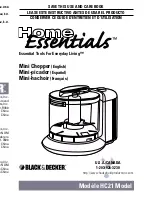
7
MultiMerge2 User Manual
Introduction
The DaySequerra MultiMerge2 enables broadcasters to smooth the transition from stereo to 5.1
surround sound by providing viewers with a 24/7 surround sound experience. With MultiMerge2 inline,
5.1 original content is passed unaffected to the viewer while original stereo content is UpMixed to a 5.1
surround sound image providing the viewer with a consistent surround experience. The transition
between 5.1 and stereo occurs seamlessly without the need of operator intervention. By offering a 24/7
5.1 signal, AC3 metadata will never need to transition between 2/0 and 3/2 mode avoiding the risk of
audio ‘clicks’, ‘pops’, and dropouts.
The DTS-Neural Audio patented approach to stereo UpMix avoids taking ‘artistic license’ with content
by placing audio exactly where it would be heard in a professional LEDE (Live End Dead End) listening
environment. For example, mono or pan-pot stereo will image in front of the listener where as stereo
containing depth information, or LtRt encoding, will surround the listener.
The MultiMerge can be used in combination with the DTS-Neural Surround DownMix to in order to pass
5.1 through stereo only facilities thus, eliminating the need for costly Master Control upgrades.
Broadcasters need a solution to effectively measure, and ultimately control the abrupt changes in
loudness that sends viewers diving for their remote controls during commercial breaks and action
scenes. The MultiMerge 2 + NLC surround loudness control simultaneously measures the perceived
loudness of 5.1 surround program audio along with 2.0 auxiliary stereo using the industry-standard ITU-
R BS.1770/1 loudness measure or the DTS-Neural Loudness Measure (NLM) algorithm.
MultiMerge 2 plus Neural Loudness Control uses the proprietary DTS-Neural Loudness Control, an
advanced loudness-leveling algorithm, to apply the appropriate gain or attenuation to maintain the
broadcaster-defined loudness level. The resulting audio has a naturally open, dynamic quality without
the annoying side-effects of traditional energy-based volume management solutions.
Loudness is a perceptual property of an audio signal when it is reproduced acoustically. It is a complex
non-linear function of amplitude, frequency and bandwidth. Current audio level meters measure the
level of audio signals expressed as the amplitude of the signal - either the RMS (root mean square)
voltage of an electrical signal or the sound pressure of an acoustical signal. Neither of these
measurements, although widely accepted, provides accurate indications of how viewers will perceive
the loudness of the audio programming.
The DTS NLM algorithm uses a perceptual model of human hearing to more accurately detect spectral
and density differences, inter-channel relationships and temporal overlaps in any audio content,
resulting in a more accurate perceived loudness measurement over time. This proprietary algorithm
was developed by after extensive research into human hearing and perceived loudness.
To improve system reliability and up-time, MultiMerge 2 + NLC uses a robust DSP-based processing
platform rather than a PC-based approach to completely avoid broadcast disruptions caused by
operating system lockups. An Ethernet interface provides long-term logging and field software updates
capability. An optional factory-installed HD/SDI module will allow for measurement of 8 channels of
program audio from group 1 or group 2 with user specified mappings within the group. A set of user-
definable alarms can alert an operator of input loss, signal clipping and high or low signal levels
referenced to the desired loudness level.
When MultiMerge 2 + NLC is used ahead of an AC3 (Dolby Digital) transmission, the target loudness
level will also match the Dial-norm metadata information, thus providing consistent, enjoyable audio for
all viewers.








































